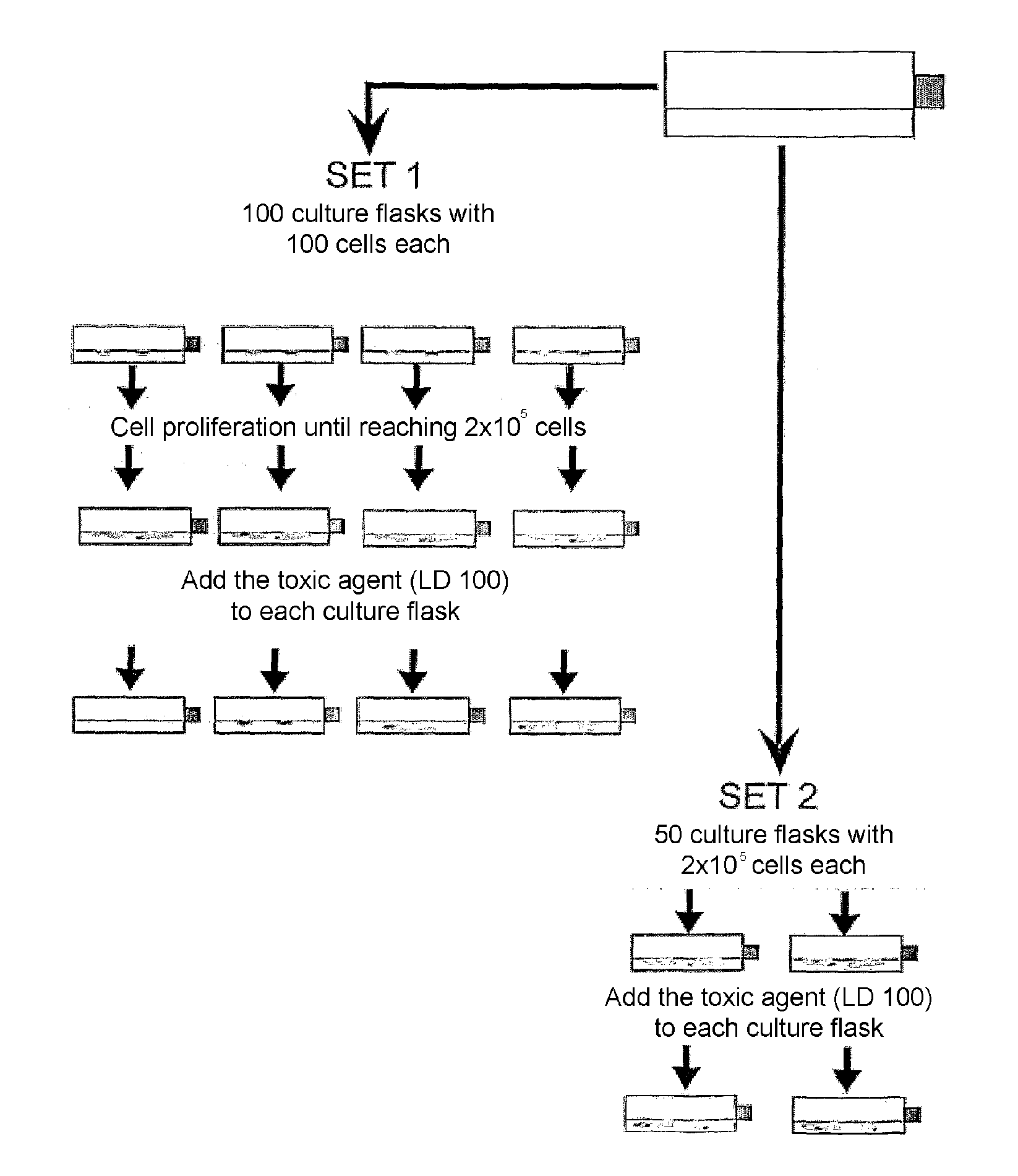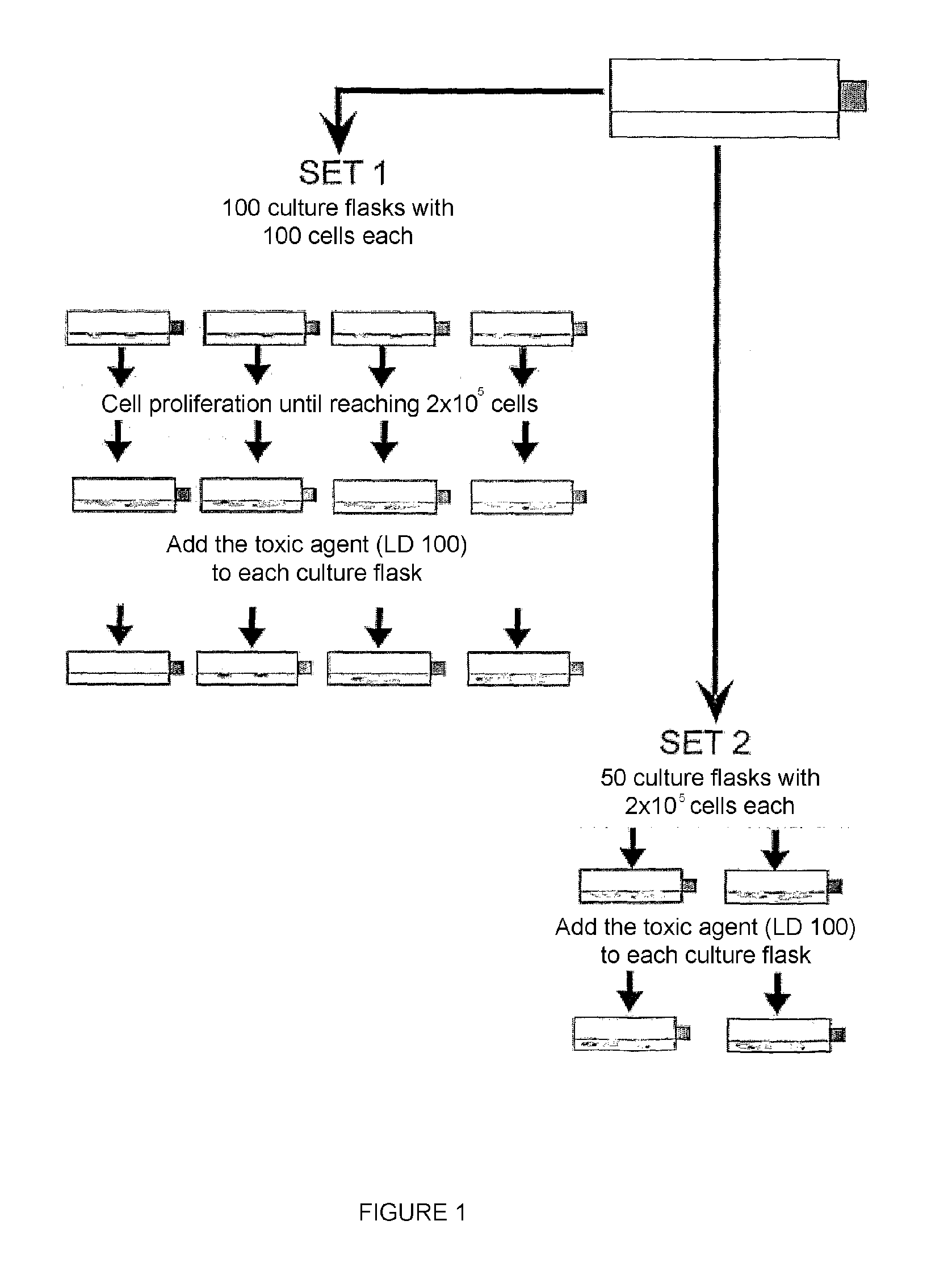Biosensors based on microalgae for the detection of environmental pollutants
- Summary
- Abstract
- Description
- Claims
- Application Information
AI Technical Summary
Benefits of technology
Problems solved by technology
Method used
Image
Examples
example 1
Obtaining Sensitive and Resistant Microalgae
[0091]Sterile commercial material was used for the culture of microalgae, which comprise sterile 96-well plates, sterile 4-well plates, 25 cm2 culture flasks, sterile plastic pipettes, sterile BG-11 culture medium, laminar flow cabinet, culture chamber for microalgae, inverted microscope, optical microscope, fridge at 4° C., stereomicroscope, oximeter, Neubauer chamber.
[0092]A water sample was collected in a sterile flask in the area in which the biosensor will be located. The microalgae for obtaining strains are cloned by isolating the latter (for example, those belonging to the genus Dictyosphaerium chlorelloides) from the sample deposited in a slide and selecting a single cell by means of a micromanipulator, in a laminar flow cabinet. Each isolated cell is transferred to one of the wells of the sterile 96-well plates with BG-11 culture medium (Sigma-Aldrich Quimica, Tres Cantos, Madrid, Spain). Each individual present in each well after...
example 2
Selection of the Strain which is Most Sensitive to a Certain Toxic Agent without Genetic Modification
[0098]The clones which are most sensitive to the exposure of the toxic agent, i.e., the clones significantly decreasing the oxygen production in the shortest time and at the lowest concentration of the toxic agent, were selected from among all the species and strains isolated from the water sample. To that end, exposures of the clones to increasing concentrations (for example 0, 3, 10, 30, 100, 300 μg L−1) of the toxic agent are carried out in triplicate, maintaining the exposure for 5 days. The strain showing a lower density against the concentration of the toxic substance is considered the most sensitive strain. The clones showing the most sensitive and fastest response to the oxygen production were selected from among the clones of least growth. The oxygen production is measured with an oximeter. Aliquots of 5×105 cells are used, measuring at 1, 2, 5, 10, 15 and 30 minutes.
example 3
Method for the Selection of Microalgae Resistant to the Toxic Agent without Genetic Modification by Means of Fluctuation Analysis (Fluctuation Analysis Modified for Liquid Cultures Applied to Unicellular Microalgae) and Optimization of the Resistant Clones Obtained by Means of Ratchet Cycles.
[0099]3.1 Selection of the Clone which is Most Sensitive to the Toxic Agent
[0100]The clone which is most sensitive to the toxic agent obtained in Example 1 is cultured in the presence of increasing concentrations (for example 0, 3, 10, 30, 100, 300 mg L−1) of toxic agent in BG-11 medium for 5 days. The number of cells in each sample is determined using an automatic counter and that concentration of toxic agent inducing a LD100 lethal dose is selected.
3.2 Fluctuation Analysis
[0101]100 culture tubes (tube volume 5 mL) are then seeded with 100 cells of microalgae of the clone which is most sensitive to the toxic agent at a low cell density and 4 mL of BG-11 medium in each one, called “SET 1”.
[0102]...
PUM
 Login to View More
Login to View More Abstract
Description
Claims
Application Information
 Login to View More
Login to View More - R&D
- Intellectual Property
- Life Sciences
- Materials
- Tech Scout
- Unparalleled Data Quality
- Higher Quality Content
- 60% Fewer Hallucinations
Browse by: Latest US Patents, China's latest patents, Technical Efficacy Thesaurus, Application Domain, Technology Topic, Popular Technical Reports.
© 2025 PatSnap. All rights reserved.Legal|Privacy policy|Modern Slavery Act Transparency Statement|Sitemap|About US| Contact US: help@patsnap.com



